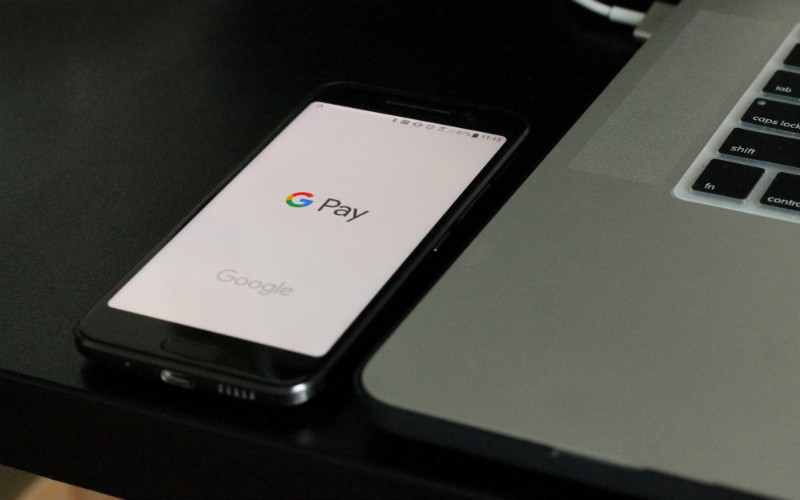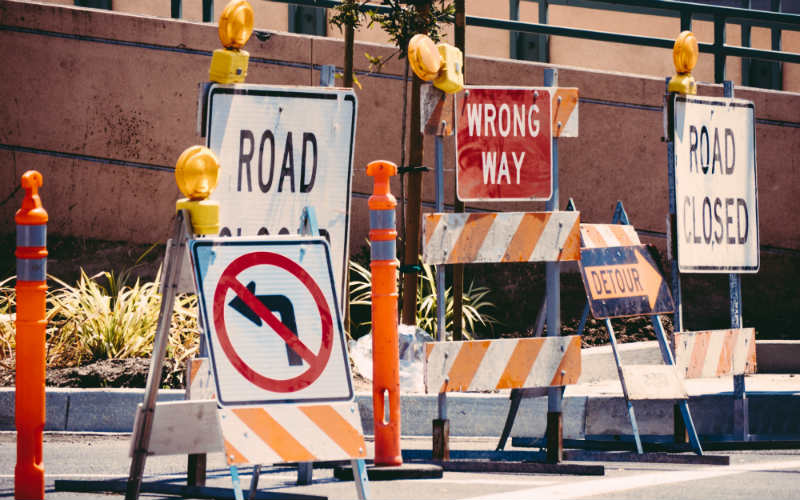It's no secret that Australia, like many developed countries around the world, has an ageing population. According to demographers, 22% of Australians will be aged over 65 by 2026, but that number is expected to grow to a quarter of the population by 2050. Currently, it's estimated around 40% of Australians of age pension age receive the full age pension while a further 24% receive a part pension.
So, it's likely that upon retirement, you, or someone you know, will be eligible for the age pension. And there's no shame in that. After all, you've probably paid hundreds of thousands of dollars in taxes over the years, so perhaps it's time you got something back.
But ahead of hanging up the work boots, it's important to understand exactly what you're entitled to so you can plan and budget for your retirement accordingly. To help, we've put together this brief guide to the age pension.
Let's start with the basics.
What is the age pension?
The age pension is a government income support payment, designed to support the basic living standard of older Australians who need it. Paid on a fortnightly basis, the scheme also encourages pensioners to maximise their overall incomes.
Who can get the age pension?
This might seem like a straightforward question, but it can actually get pretty complex. There are three tests set out to see whether an individual is eligible for the pension. You must:
- Be at least 67 years old
- Be an Australian resident living in Australia
- Meet an income and assets test
Easy right? Not quite.
The age test
The Australian government began increasing the age at which you can start receiving the age pension. Use the table below to see if you're affected and if you qualify.
| Your birthdate | Your Age Pension age | Date of Age Pension age change |
|---|---|---|
| 1 July 1952 to 31 December 1953 | 65 years and 6 months | 1 July 2017 |
| 1 January 1954 to 30 June 1955 | 66 years | 1 July 2019 |
| 1 July to 31 December 1956 | 66 years and 6 months | 1 July 2021 |
| On or after 1 January 1957 | 67 years | 1 July 2023 |
Residency test
As well as being an Australian resident, to qualify for the age pension you must be in Australia on the day your claim is lodged and satisfy one of the following criteria:
- Be an Australian resident for a total of at least 10 years, with one stay lasting for at least five years consecutively;
- Be a refugee or former refugee exempt from the 10-year rule;
- Be a woman whose partner has died and have been an Australian resident for two years prior to claiming (both the widow and her partner must have been Australian residents when the partner passed away);
- Have lived or worked overseas in an agreement country that may qualify you for an age pension
Pension means testing
Applying for the age pension will require Services Australia to find out the scope of your wealth and how much money you're eligible to receive. There are two tests used to find this out: the income test and the assets test.
It's important to note that although both of these tests will be used, only one will be applied to your pension: the one that results in the lower pension rate.
The income test
Services Australia defines assessable income as the gross employment income you earn from work. Examples of this include:
- Wages
- Income from financial investments
- Income from superannuation funds
- Dividends from a private trust or company
- Income from outside Australia, including non-Australian pensions
Some investments and assets will also be subject to deeming rates. Deeming rates are a pretty complex topic. To put it simply, deeming is a set of rules that the government will use to estimate your income from your financial assets. It assumes these assets earn money, regardless of whether they actually do or not.
Examples of assets subject to deeming rates include:
- Bank accounts
- Term deposits
- Managed investments, loans, and debentures
- Listed shares and securities
See also: Compare Pensioner Savings Accounts
So how much income can you earn before your pension is reduced?
There are different rules depending on your relationship status, regarding how much you can earn and how that will affect your pension. Here are the thresholds as of September 2024.
Single person
| If your income per fortnight is | your pension will reduce by |
|---|---|
| up to $212 | $0 |
| over $212 | 50 cents for each dollar over $212 |
A couple living together or apart due to ill health
| If your income per fortnight is | your pension will reduce by |
|---|---|
| up to $372 | $0 |
| over $372 | 25 cents for each dollar over $372 |
If you earn too much money for the fortnight, you'll reach the 'cut-off point' and won't receive a pension payment for that period. You'll find those amounts in the table below.
| If you're: | you won't receive a pension payment when your fortnightly income reaches |
|---|---|
| single | $2,500.80 |
| a couple living together | $3,822.40 combined |
| a couple living apart due to ill health | $4,949.60 combined |
All info in the tables above accurate as at 20 September 2024
It's worth noting the cut-off point may be higher if you get rent assistance or work bonus, which allows you to earn extra income from working without reducing your pension - more on this below.
Assets test
As well as defining your income, Services Australia is required to find out the value of your assets to see if these will affect your payment rate.
Assets are defined as property or items you or your partner own in full or part, or have an interest in. They include:
- Real estate that's not your residential home
- Home contents, personal effects, vehicles and other personal assets
- Financial and superannuation investments
- Annuities, income streams, and superannuation pensions
- Shares
- Gifting
- Sole trader, partnerships, private trusts, and private companies
- Cryptocurrencies
- Deceased estate
Assets that fall into these categories that are overseas will be converted into the equivalent Australian dollar amount.
There are some exceptions to items you might have thought of as assets. Examples include:
- Your residential home and surrounding land up to two hectares
- Proceeds from the sale of your residential home will be exempt for up to 12 months or two years if entering a care situation
- A cemetery plot or prepaid funeral
If you leave your home to enter into an aged care facility, your principal home may be included in your assets test unless:
- your partner is still living there
- you are leaving your home temporarily
Once Services Australia has figured out how much your assets are worth, they'll see if these exceed the asset test limit. These limits, which you'll find below, are updated every January, March, July, and September each year.
Limits for a full pension
| If you're | Homeowner | Non-homeowner |
|---|---|---|
| Single | $314,000 | $556,000 |
| A couple, combined | $470,000 | $722,000 |
| A couple, separated due to illness, combined | $470,000 | $722,000 |
| A couple, 1 partner eligible, combined | $470,000 | $722,000 |
Limits for a part pension
| If you're | Homeowner | Non-homeowner |
|---|---|---|
| Single | $695,000 | $947,500 |
| A couple, combined | $1,045,500 | $1,297,500 |
| A couple, separated due to illness, combined | $1,233,000 | $1,485,000 |
| A couple, 1 partner eligible, combined | $1,045,500 | $1,297,500 |
Info accurate as at September 2024
How assets reduce pension payments?
Every $1,000 in assets over the assets free area reduces a pensioner's asset-tested pension rate by $3 per fortnight (both for singles and couples combined).
How much can you get on the age pension?
Now we've got through the super simple topic of who can get the age pension, we can look at how much you could actually receive.
The maximum pension rates are broken down into the basic rates, the pension supplement, and the energy supplement. The pension supplement is a regular extra payment designed to help with bills and medical costs, likewise the energy supplement for energy costs.
Check out the rates in the table below.
| Per fortnight | Single | Couple each | Couple combined | Couple apart due to ill health |
|---|---|---|---|---|
| Maximum basic rate | $1,047.10 | $789.30 | $1,578.60 | $1,047.10 |
| Maximum pension supplement | $83.20 | $62.70 | $125.40 | $83.20 |
| Energy supplement | $14.10 | $10.60 | $21.20 | $14.10 |
| Total | $1,144.40 | $862.60 | $1,725.20 | $1,144.40 |
Info accurate as at September 2024
Do the rates change?
Yes!
Base pensions are indexed twice a year, on 20 March and 20 September, to keep them in line with Australia's cost of living. Indexation is based on growth in the Consumer Price Index (CPI), the Pensioner and Beneficiary Living Cost Index (PBLCI) which specifically looks at the cost of living of pensioners, and other wage measures.
The wages benchmark sets the combined couple rate of the age pension at 41.76% of Male Total Average Weekly Earnings (MTAWE). The single rate of pension is two-thirds of the couple rate.
Work bonus
The so-called Work Bonus provides an added incentive for pensioners to work by effectively increasing the amount an eligible pensioner can earn from work before their earnings affects their pension. Under the Work Bonus, the first $300 of fortnightly income from work isn't counted under the pension income tests.
As we've covered, as at 20 September 2024, a single pensioner can earn $212 a fortnight and still be eligible for the full single pension. The work bonus can effectively allow them to top that amount up to $300 a fortnight and still not lose the full pension.
Pensioners can also accrue any unused part of the $300 fortnightly Work Bonus concession in their Work Bonus income bank. The maximum amount that can be accrued is $11,800. Basically, the income bank amount offsets future income from work that would otherwise be assessable under the pension income test.
For those pensioners not working, don't fear, you're not missing out! If you're not working, and not using the work bonus, that $300 fortnightly exemption amount accrues in a work bonus income bank anyway. Best of all, it never expires.
As of 1 January 2024, all new pensioners automatically receive $4,000 into their income bank which they can use alongside the normal $300 per fortnight exemption. The $11,800 cap still applies, however.
Case studies
Here are two different absolutely real-life people, whose situations you can hopefully relate to, to see how much of the age pension you can receive. We've heavily simplified these cases, just to give you a vague idea of how the pension works and put a practical spin on the tests involved.
Pan Shon

Pan is a 79-year-old Australian, living in the home he bought 30 years ago. He's lived the bachelor lifestyle since his youth and can play a round of golf in two hours. We can see Pan passes both the age and residency test.
Pan receives income from superannuation and has some money in savings and term deposits, so fortnightly he earns $500. As he is above the pension income test free area for a single of $212 a fortnight, his pension will reduce by 50c for every dollar above this amount ($288 X $0.50) This comes to $144, which taken from the maximum pension rate for a single of $1,047.10, would allow him to receive $903.10 a fortnight.
However, we also need to apply the asset test to see if that would deduct more or less from the pension amount.
Pan's assets include some savvy investments and a sleek Porsche, totalling $350,250. As this exceeds the asset limit for a single homeowner of $314,250, we must subtract $3 from the pension for every $1,000 above that limit ($36,000). So, 36 X 3 = 108.
This would be a reduction of $108 from the maximum pension rate for a single of $1,047.10, allowing him to receive $939.10.
As we can see, Pan exceeds the limits for the full pension under both the income and assets tests. However, he is entitled to a part pension. According to Services Australia policy, Pan would be paid at the lower rate of payment. Therefore, Pan would be assessed under his income test and receive a part pension of $903.10 a fortnight.
Andy and Fran

Andy and Fran are 70-year-old British immigrants. They've been together 50 years and live in a retirement facility. They moved to 'Straya in 2002 and received citizenship in 2006, living here for the entirety of that period and therefore pass the residency test.
Let's apply the income test to Andy and Fran as we did above with Pan. As former Sheriff of Nottingham, Andy receives a tidy sum from England, while Fran has some savings from a real estate business, with the pair's total income coming to $1,500 fortnightly. This is above the pension income test free area for a couple of $372, so their pension will reduce by 25c for every dollar above this amount. So, 1,128 X 0.25 = $282
This $282 comes off the maximum pension rate for a couple of $1,578.60, would allow them to receive $1,296.60 a fortnight. However, we also need to apply the asset test to see if that would deduct more or less from the pension amount.
Due to Fran's wheeling and dealing in the real estate business, the two have two lucrative investment properties, which totals their assets at $1.5 million. As this exceeds the asset limit for a homeowner couple, combined, of $1,045,500, we must subtract $3 from the pension for every $1,000 above that limit.
This would be a reduction of $1,362 from the maximum pension rate for a couple, which is $1,578. As a result, Andy and Fran would receive a very modest part pension of $216 a fortnight under the assets test.
How to apply
Savings.com.au has outlined the steps below to help you through the aged pension application process:
- Prepare to claim - Hopefully, you've already done this based on the information we've provided above. Double-check your eligibility and have your paperwork ready for anything Services Australia might require information on.
- Get ready to claim - The easiest way to claim is online and to do this you need a myGov account linked to Centrelink. You can verify your identity with a birth or citizenship certificate and two other documents that confirm your identity in the community, like a drivers' license or passport. If you can't claim online, you can call Services Australia on the 'Older Australians line' on 132 300, go to a service centre, or print and complete the 'Claim for Age Pension and Pensions Bonus form' and the 'Income and Assets form'.
- Make your claim - Sign in to myGov and go to Centrelink. Select 'Payments and Claims' from the menu, then 'Claims', then 'Make a claim'. Under 'Older Australians', select 'Get Started'. From here, you'll be prompted to answer a number of questions and submit any necessary documents.
- Track your claim - After submitting, you'll get a receipt confirming your submission, the ID number of your claim, the estimated date your claim will be complete, and a link to track its progress online. You'll be notified of the result of your claim via a letter to your myGov inbox, Centrelink online account, or your letterbox.
What do I do if my situation changes?
Circumstances change, that's just a part of life. You must notify Services Australia if:
- Your address changes
- Your income changes
- Your assets change
- Your partner's income or assets change
- You stop living with your partner
- Your partner dies
- You marry or start living with your partner
You've got 14 days to let Services Australia know of the changes. If you don't, you could be getting paid you too much and you'll have to pay it back at a later date.
Can I still get the pension if I go overseas?
Essentially yes, however, the length of time you're going for and where you're going is a major factor.
When you leave Australia for less than six weeks, your age pension won't normally change. Leaving for longer than this will see your Pension Supplement drop to the basic rate and your Energy Supplement stop. If you leave Australia for longer than 26 weeks, your rate may decrease based on how long you'd been a resident between the ages of 16 and age pension age. If you've been a resident for more than 35 years, your rate won't normally change, while less than this will see you get a lower rate.
If you leave Australia to live in another country, your Pension Supplement will drop to the basic rate and your Energy Supplement will stop. You'll also get an 'outside Australia rate' on your age pension. These are a separate set of thresholds and limits for Australian expats regarding how much they can receive on the age pension.
Savings.com.au's two cents
There's a wealth of information in this article and the rules and age pension policies may seem overwhelming. However, applying for the age pension is generally straightforward, provided you've got the required personal and financial information handy.
If you find claiming online a bit tricky, you can apply by filling out a paper form or make an appointment to visit a Services Australia service centre.
An accountant or financial advisor can also help you with the specifics of whether you will qualify for the pension and give you some idea of how much you might be able to receive.
Generally, financial planners will advise younger Australians that they'll be able to retire more comfortably by staying on top of their superannuation and in control of their finances and investments, but life doesn't always go as planned. The pension provides older Australians with a great safety net should they need it.
Photo by Sven Mieke on Unsplash



 Jacob Cocciolone
Jacob Cocciolone
 Denise Raward
Denise Raward













